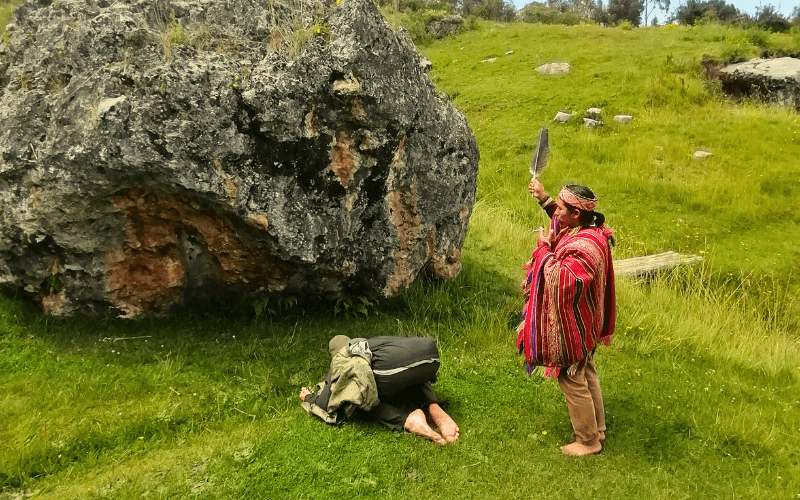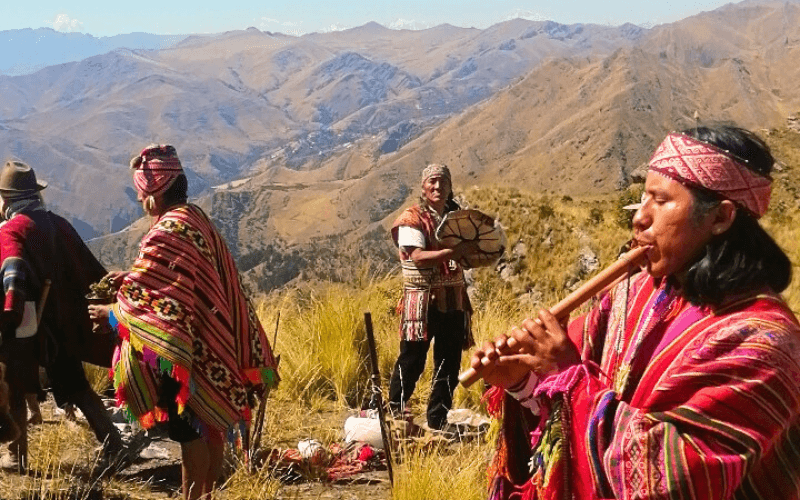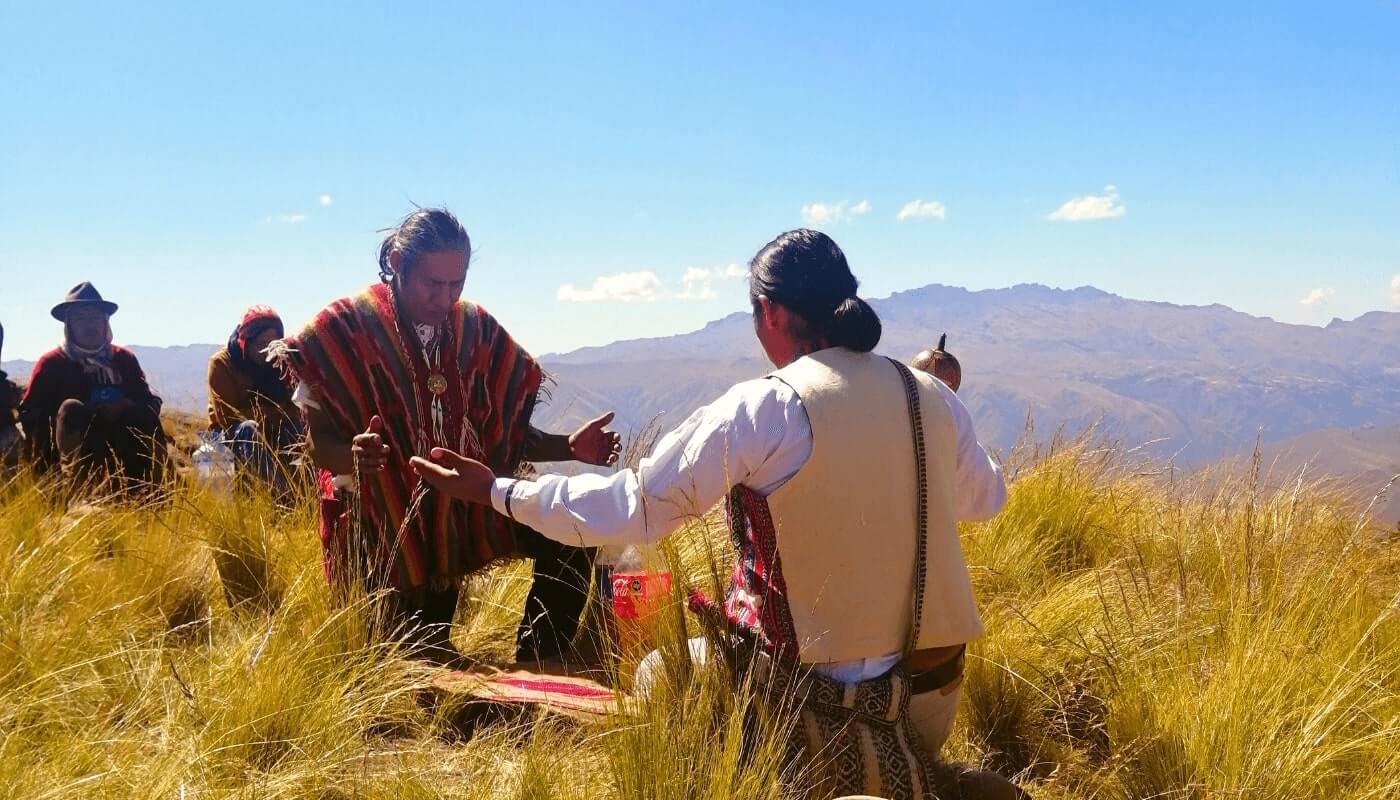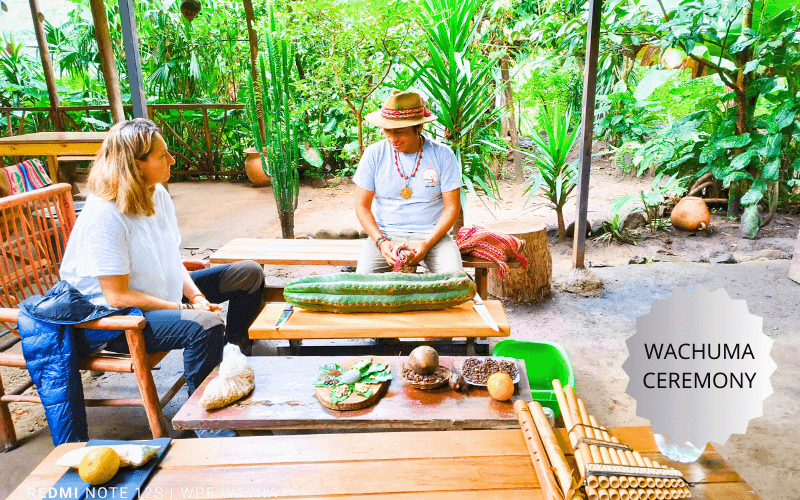Following the timeless wisdom passed down from our ancestors, we are called to awaken our consciousness by honoring and embracing the living energies that surround us—the sacred forces that have always been with us. At the heart of this sacred journey lies Wachuma, also known as San Pedro, a revered plant medicine that has been a guide, healer, and teacher for generations. With deep roots in the ancient Andean traditions, Wachuma has long been cherished by indigenous peoples for its power to heal, illuminate the soul, and foster spiritual awakening.
At Willkapacha Experience, we hold Wachuma in the highest reverence, honoring its sacred energy and transformative gifts. This medicine is not only a path to spiritual healing but also a gateway to deep self-discovery, guiding us to reconnect with the wisdom of Pachamama (Mother Earth) and the boundless energies of the cosmos. Through Wachuma, we awaken to our truest essence, cleansing our hearts, minds, and spirits, and empowering us to step into our fullest potential with clarity and grace.
Cultural and Spiritual Significance
Wachuma, also known as San Pedro (Echinopsis pachanoi), is a sacred cactus native to the Andes mountains, particularly in Peru, Ecuador, and Bolivia. It has been used for thousands of years by indigenous cultures, particularly in the Andean region, as a medicine and spiritual guide. The cactus is considered a “master plant,” a powerful being that teaches those who work with it about the interconnectedness of life, the cosmos, and one’s true self.
In Andean cultures, Wachuma is deeply tied to spirituality and healing. Shamans, called Hampicamayoq or Paqos, use Wachuma in ceremonial contexts to facilitate profound spiritual journeys and to gain insight from the natural world and the divine. These ceremonies are not only for healing but are also seen as an essential part of connecting with Pachamama (Mother Earth), the cosmos, and ancestral spirits.
Wachuma ceremonies are often held in sacred places, such as Inca temples, nature or altars, designed to honor the sacredness of the plant and its healing properties. The cactus is revered as a teacher that awakens deep spiritual insight and awareness, guiding individuals to heal emotionally, mentally, and spiritually while offering a renewed connection to the natural world and the divine.
The Science of Wachuma
Wachuma contains the psychoactive compound mescaline, which makes a transformative effects. Mescaline is a naturally occurring alkaloid that affects serotonin receptors in the brain, particularly the 5-HT2A receptor, influencing perception, mood, and cognition.
When consumed, Wachuma can have a profound impact on consciousness, allowing individuals to experience altered perceptions, vivid visualizations, and a deep sense of interconnectedness with nature. The chemical structure of mescaline is similar to serotonin, a neurotransmitter that regulates mood, memory, and emotional response. This allows mescaline to alter sensory experiences, causing an enhanced connection to the environment and intense introspection.
Scientific studies have shown that mescaline can stimulate neural activity, potentially leading to emotional healing and personal transformation. The altered state of consciousness induced by Wachuma can result in heightened self-awareness, emotional release, and spiritual revelations. While much of the research into mescaline and Wachuma is ongoing, there is evidence suggesting that the plant’s effects on the brain may help promote emotional healing and cognitive flexibility.
The Experience of Wachuma




The Wachuma experience can vary widely depending on the individual, the setting, and the guidance provided during the ceremony. The experience generally unfolds in stages:
- Onset (1–2 hours after consumption): After ingesting the brew, which is typically prepared as a tea or infusion, participants may begin to feel physical sensations such as warmth, tingling, or a deep sense of relaxation. There may be mild nausea or discomfort as the body processes the medicine.
- Peak (2–4 hours after consumption): As the effects deepen, participants often experience intense visualizations, emotional release, and feelings of profound connection to nature. Some describe seeing vibrant colors, landscapes, or encountering spiritual beings. The experience is often accompanied by a sense of clarity and connection to the cosmos, with individuals feeling as though they are in the presence of the divine or their own higher self.
- Reflection and Integration (4–8 hours after consumption): As the intensity of the experience begins to wane, participants typically enter a phase of reflection and emotional processing. Many individuals report feelings of peace, clarity, and empowerment. The journey often includes personal revelations, emotional healing, and a sense of unity with the Earth and the universe. This stage allows for integration, where participants may begin to understand the lessons or insights gained during the ceremony.
The experience can also include purging (vomiting or diarrhea), which is considered a form of emotional and spiritual cleansing. This purging process is seen as a way to release negative energy, trauma, or toxins from the body and mind.
Therapeutic Benefits
Wachuma is considered to have various therapeutic benefits, both emotional and psychological. Some of the key therapeutic effects include:
- Emotional Healing: Wachuma helps to confront and process repressed emotions, leading to emotional release and healing. This can be particularly beneficial for individuals dealing with trauma, grief, anxiety, or depression.
- Personal Growth and Self-Awareness: Wachuma ceremonies are often used for personal growth and self-discovery. The plant can help individuals gain clarity on life’s purpose, overcome mental blockages, and deepen their understanding of their true selves. Many participants leave the ceremony feeling more empowered, connected, and aligned with their own potential.
- Spiritual Awakening: Wachuma is a powerful tool for spiritual awakening. also profound spiritual insights, feeling deeply connected to Pachamama (Mother Earth), the cosmos, and ancestral spirits. It is used as a tool to facilitate connection to a higher consciousness or divine guidance.
- Healing of Addictions and Behavioral Patterns: There is growing evidence suggesting that Wachuma may help individuals overcome addictive behaviors or harmful patterns by addressing the root causes of those behaviors. The plant can help individuals gain new perspectives on their struggles and begin healing from them.
- Improved Mental Clarity and Cognitive Function: The insights gained during a Wachuma ceremony can lead to improved mental clarity and greater emotional regulation. The plant’s effects may help participants better understand their thoughts, emotions, and behaviors, leading to more balanced and thoughtful decision-making in everyday life.
Safety and Considerations
While Wachuma is generally considered safe when used in the right context, it is important to approach it with caution and respect. Some key safety considerations include:
- Physical Health: Individuals with pre-existing medical conditions, particularly heart issues, gastrointestinal problems, or neurological disorders, should consult a healthcare professional before participating in a Wachuma ceremony. Additionally, the purging process (vomiting and diarrhea) can be intense, and individuals should be prepared for this physical release.
- Mental Health: People with a history of severe mental health conditions, particularly those with psychosis or schizophrenia, should exercise caution when considering Wachuma. The plant’s psychoactive effects can sometimes trigger or exacerbate underlying mental health issues.
- Set and Setting: The environment in which Wachuma is consumed plays a crucial role in the experience. Ceremonies should be conducted in a controlled, safe, and supportive setting, ideally under the guidance of experienced facilitators or shamans. The presence of an experienced guide is essential for navigating the experience, especially if it becomes overwhelming or challenging.
- Integration: After the ceremony, the insights and experiences gained from Wachuma can be profound. It is important to have time and space for integration, which may involve reflecting on the experience, journaling, or speaking with a therapist or shaman. Integration helps ensure that the healing process continues beyond the ceremony.
Wachuma is a sacred plant medicine with a rich cultural and spiritual legacy in the Andean region. It offers profound therapeutic benefits, including emotional healing, personal growth, and spiritual awakening. When consumed in the proper ceremonial context under the guidance of experienced facilitators, Wachuma can lead to deep insights and transformative experiences. However, as with any powerful plant medicine, it is essential to approach it with respect, caution, and preparation to ensure a safe and meaningful journey.
At WillkaPachaExperience, we honor the sacredness of Wachuma by guiding our participants through authentic ceremonies conducted by experienced Hampicamayoq (healers) and Paqos (shamans). Our ceremonies are held in safe, sacred spaces designed to connect you with Pachamama (Mother Earth) and the cosmos, allowing for personal and spiritual growth. We ensure a supportive and respectful environment where you can journey deeply with Wachuma, integrating its teachings and wisdom for lasting transformation and we emphasize the importance of preparation and integration to maximize the benefits of your experience with Wachuma, helping you connect with your inner self and the universal energy that flows through all things.
.

